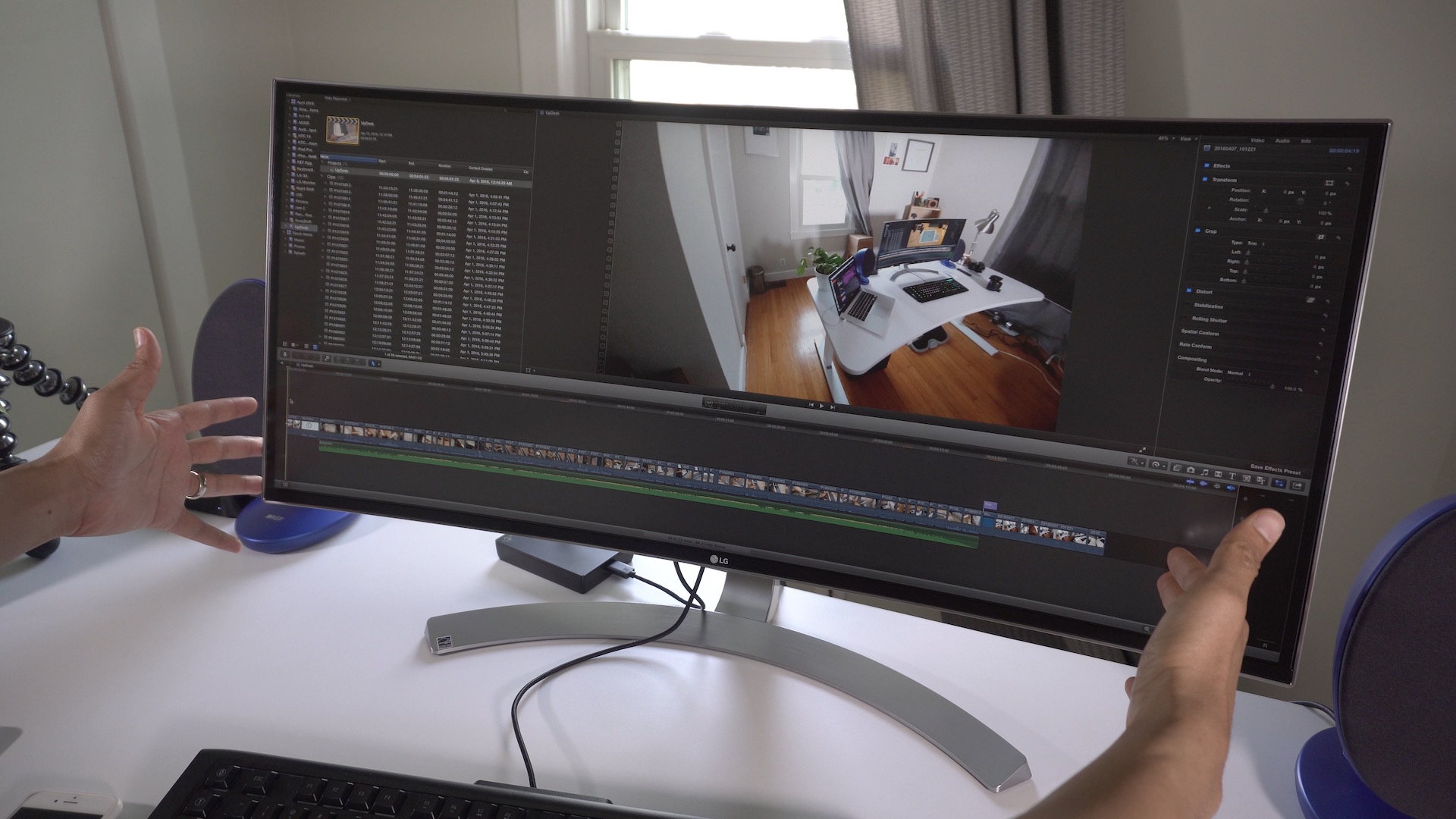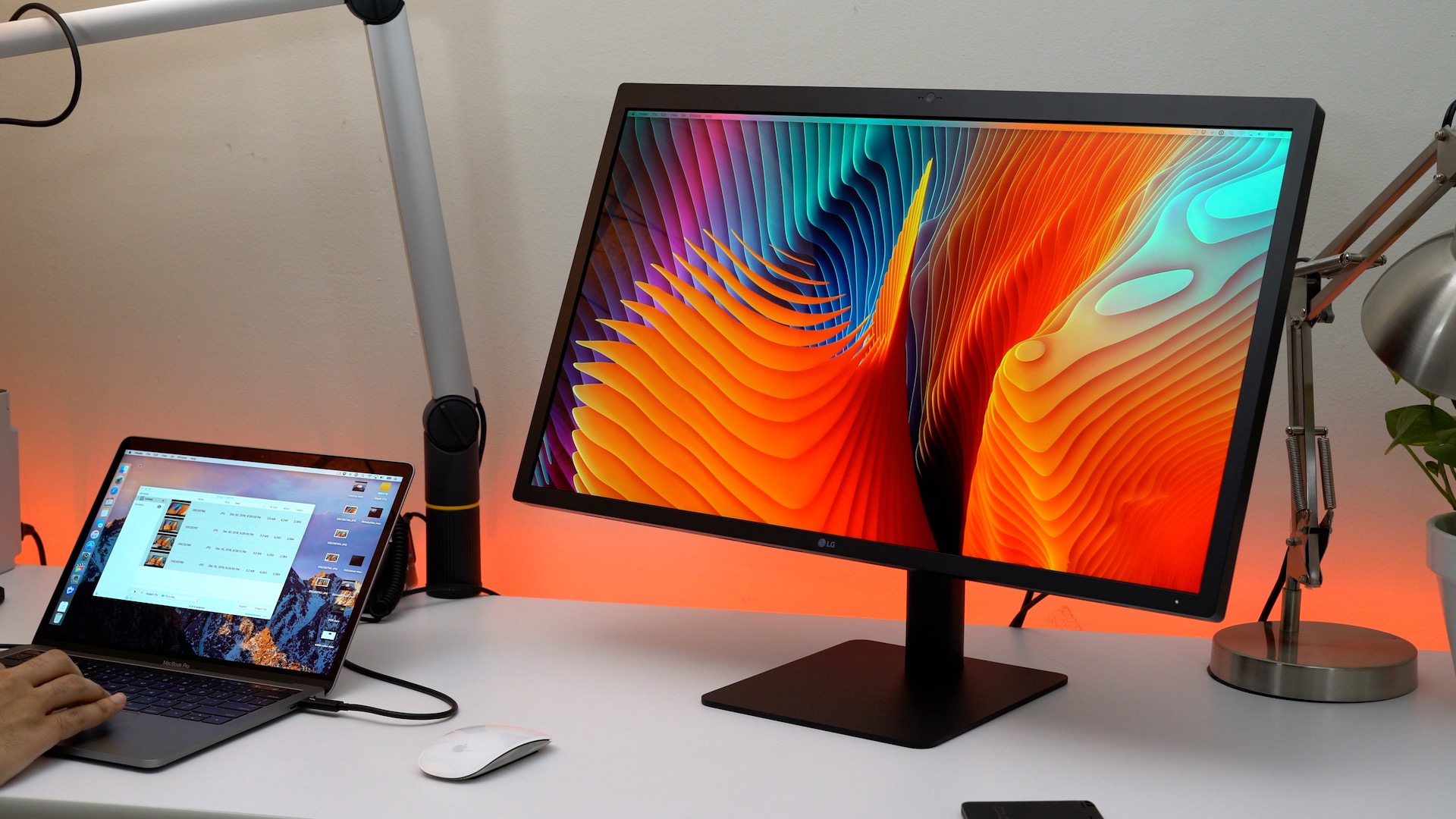
- #LG SCREENS FOR MAC MAC OS#
- #LG SCREENS FOR MAC 1080P#
- #LG SCREENS FOR MAC PRO#
- #LG SCREENS FOR MAC PLUS#
#LG SCREENS FOR MAC MAC OS#
Many PowerMac users complain that if you set the resolution over 1440p, "everything is too small even to see." Installing a clever piece of open-source software (opens in new tab) can fix this Mac OS limitation. Its only drawback is that its refresh rate is 60 Hz, and you can't fiddle with it.Īt the back, it offers an excellent selection of ports: One USB-C Thunderbolt 3 port with 85W of power delivery and DisplayPort Alt Mode, one DisplayPort 1.4, and two HDMI ports (limited to 3440x1440 due to HDMI being v2.0). This is what some call "5K2K" -5000 horizontal pixels and 2000 vertical pixels-, while others dub it "WUHD" for Wide Ultra HD, or - to complicate matters - "2160p". Technically, it sports a 5120x2160 pixels resolution, a 33% larger screen than 4K monitors. Luckily, its VESA mounts extend this further. Its ergonomic adjustment options are a tilt and limited height, without swivel. It has a good build quality, with the excellent addition of a plastic strap at the pole to help with cable management. It is a good monitor for most uses and has wide viewing angles making it suited for office collaboration.
#LG SCREENS FOR MAC PLUS#
Its 5K resolution lets you view multiple apps on your screen simultaneously without hindering functionality, like a full-size 4K video, plus an ample 5:9 work area at the side. Multitasking is easy with this 34-inch ultrawide monitor from LG. Dell´s trademark three-year warranty is just the icing on the cake.
#LG SCREENS FOR MAC PRO#
Although more advanced monitors are available, for most MacBook Pro users, this one from Dell is the better choice. It uses USB-C to power your MacBook Pro and display its video with just one cord. It has ample connectivity options: two USB-C ports (one downstream, one upstream), three USB-A connectors for plugging peripherals, one DisplayPort, and one HDMI port. Designers may wish to calibrate it to improve graphics work results, but suffice that its panel covers +99% of sRGB and +95% of DCI-P3. Each pixel can be constructed from more than one billion shades of color. Regarding image reproduction, the results are excellent thanks to its SDR 30-bit mode. It allows adjusting its display height, swivel, pivot, and tilt for the ultimate comfort and ergonomics. The colors look great out of the box, and the display is bright enough for most types of work. This Dell monitor has the perfect size for an office desk (opens in new tab), measuring 27 inches. Once you've experienced the simplicity of USB-C, you won't want to go back to fiddling with multiple lines and power adapters. Most USB-C monitors also have USB hubs so that you can leave a mouse, keyboard, and other peripherals like storage attached to the screen, and they'll all connect to the MacBook when you hook that single USB-C / Thunderbolt cable. USB-C and its closely related Thunderbolt sibling allow you to connect your MacBook with a single cable that drives the image and powers the laptop. But USB-C remains the best way to hook a MacBook Pro to an external display. The latest Apple silicon 14-inch and 16-inch MacBook Pros come with HDMI connectivity. The one catch is that combining 4K-plus resolutions with excellent connectivity doesn't always come cheap. Happily, 4K monitors can now be had relatively cheaply, so there's little reason to compromise on resolution and pixel density.


Even 1440p or QHD is marginal in terms of pixel density.
#LG SCREENS FOR MAC 1080P#
For that reason, we'd rule out 1080p panels. Higher resolutions also allow perfect desktop space for accommodating the toolbars and menus that come with productivity apps, including image and video editing. The better the pixel density, the crisper MacOS will render fonts and icons. MacOS is expressly engineered to look great with higher pixel densities. MacOS works best with high-resolution displays.


 0 kommentar(er)
0 kommentar(er)
